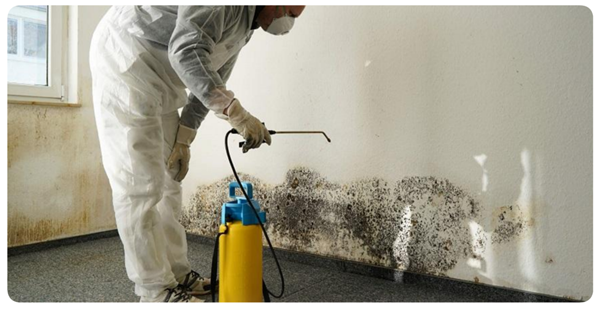Behind the Scenes: A Look at the 3D Animation Production Process
3D animation has become a cornerstone of the entertainment industry, shaping everything from blockbuster movies and video games to advertising and virtual reality experiences. The process of creating 3D animations is intricate and requires a blend of artistic talent, technical expertise, and meticulous planning. This article delves into the behind-the-scenes process of 3D animation production, exploring the various stages involved from concept to final render.
Concept and Storyboarding
The first step in any 3D Animation Services project is the concept and storyboarding phase. This stage involves brainstorming ideas, developing the story, and creating a visual blueprint for the animation. The goal is to outline the narrative and visual elements that will guide the entire production process.
The concept phase begins with brainstorming sessions where writers, directors, and producers collaborate to develop the storyline and characters. This stage is crucial for defining the animation’s tone, style, and overall direction. Once the story is solidified, the team moves on to storyboarding.
Storyboarding involves creating a series of sketches or digital illustrations that depict the key scenes and actions in the animation. These storyboards serve as a visual guide, helping the team understand the flow of the narrative, the composition of each shot, and the timing of movements. Storyboards are often accompanied by a script that outlines the dialogue and actions in each scene.
Modeling and Texturing
Once the concept and storyboards are approved, the next step is modeling and texturing. This phase involves creating the 3D models of characters, props, and environments that will populate the animation.
Modeling begins with the creation of basic shapes called meshes, which form the foundation of the 3D models. Artists use specialized software like Autodesk Maya, Blender, or 3ds Max to sculpt these meshes into detailed models. This process requires a keen eye for detail and a deep understanding of anatomy, physics, and proportion.
Texturing follows modeling and involves applying colors, patterns, and surface details to the 3D models. Texturing artists use software like Adobe Substance Painter or Mari to create textures that make the models look realistic or stylized, depending on the project’s artistic direction. This step is essential for adding depth and complexity to the models, ensuring they appear visually appealing and believable.
Rigging and Skinning
With the 3D models completed, the next step is rigging and skinning. Rigging involves creating a digital skeleton for the models, allowing them to move and perform actions. This digital skeleton, or rig, consists of joints, bones, and control handles that animators use to manipulate the models.
Rigging requires technical expertise and a thorough understanding of biomechanics. The rig must be designed to accommodate the range of motions required by the animation while maintaining the model’s structural integrity. This process often involves creating custom rigs tailored to the specific needs of each character or object.
Skinning is the process of attaching the 3D model to the rig, ensuring the model deforms correctly when the rig is manipulated. Skinning involves assigning weights to different parts of the model, determining how much each joint influences the surrounding geometry. This step is crucial for achieving realistic and natural-looking movements.
Animation
The animation phase is where the magic happens. Animators bring the characters and scenes to life by creating the illusion of motion. This process involves manipulating the rigged models to perform the actions and movements outlined in the storyboards.
Animators use keyframe animation techniques to define the start and end points of a movement, allowing the software to interpolate the frames in between. This method is used for a wide range of actions, from simple gestures to complex sequences. Additionally, animators may use motion capture technology to record real-life movements and apply them to the 3D models. This technique is particularly useful for achieving realistic human motion.
Throughout the animation process, animators work closely with directors and other team members to ensure the movements align with the story and character personalities. They also pay attention to timing, weight, and physics to create believable and engaging animations.
Lighting and Rendering
After the animation is completed, the next step is lighting and rendering. This phase involves setting up the lighting in the 3D environment and generating the final images or frames that make up the animation.
Lighting artists use various techniques to simulate natural and artificial light sources, creating the desired mood and atmosphere for each scene. They carefully place lights, adjust their intensity and color, and use shadows and reflections to enhance the visual appeal of the animation. Lighting is a critical aspect of 3D animation, as it can dramatically impact the overall look and feel of the final product.
Rendering is the process of converting the 3D models, textures, and animations into 2D images or frames. This step requires significant computational power, as rendering software must calculate complex lighting interactions, shadows, reflections, and other visual effects. Depending on the complexity of the scenes, rendering can take anywhere from a few minutes to several hours per frame.
Post-Production
The final phase of the 3D animation production process is post-production. This stage involves editing the rendered frames, adding special effects, and finalizing the audio.
Editing involves assembling the rendered frames into a cohesive sequence, adding transitions, and ensuring the timing matches the storyboard and script. This process may also include color correction and grading to enhance the visual consistency and appeal of the animation.
Special effects, or VFX, are often added during post-production to enhance the realism or stylization of the animation. VFX artists use software like Adobe After Effects or Nuke to create effects such as explosions, smoke, magic spells, and other visual elements that were not part of the original render.
Audio is another critical component of post-production. Sound designers and composers create and synchronize the audio elements, including dialogue, sound effects, and music, to match the animation. High-quality audio is essential for creating an immersive and engaging experience for the audience.
Final Review and Delivery
Before the animation is delivered to the client or released to the public, it undergoes a final review. This review process involves meticulous scrutiny by the directors, producers, and other team members to ensure the animation meets the project’s standards and objectives.
Any issues or discrepancies identified during the review are addressed and corrected. This may involve re-rendering certain frames, adjusting the animation, or fine-tuning the audio. The goal is to deliver a polished and professional final product that meets or exceeds the client’s expectations.
Once the final review is complete, the animation is exported in the desired format and delivered to the client or distribution platform. This marks the culmination of months or even years of hard work and collaboration by a dedicated team of artists and technicians.
Conclusion: The Art and Science of 3D Animation
The production process of 3D animation is a complex and multifaceted journey that blends artistic creativity with technical precision. From the initial concept and storyboarding to the final review and delivery, each stage requires specialized skills and collaboration among a diverse team of professionals.
Understanding the intricacies of 3D animation production not only highlights the immense effort that goes into creating these captivating visual experiences but also underscores the importance of each team member’s role. As technology continues to advance, the possibilities for innovation in 3D animation are boundless, promising even more breathtaking and immersive animations in the future.



